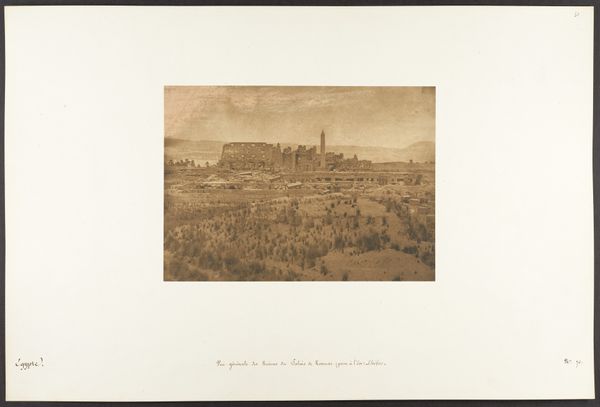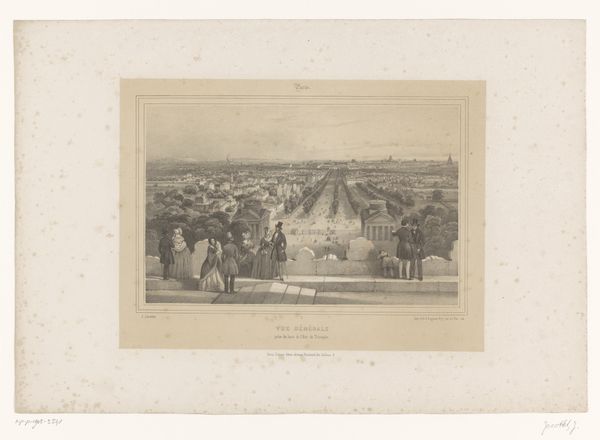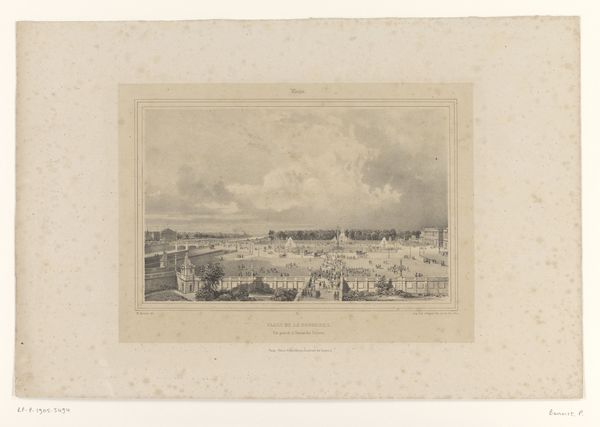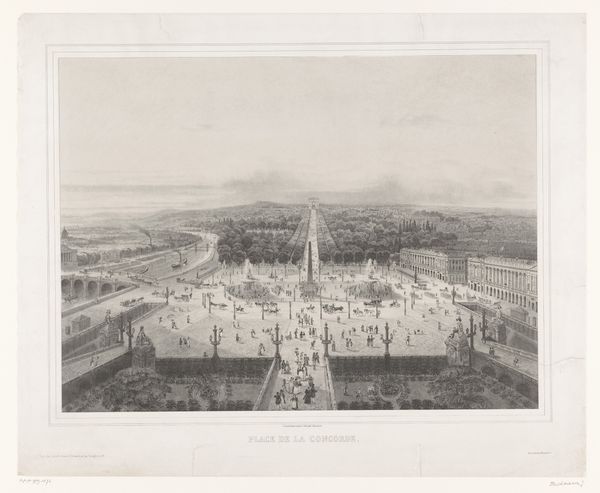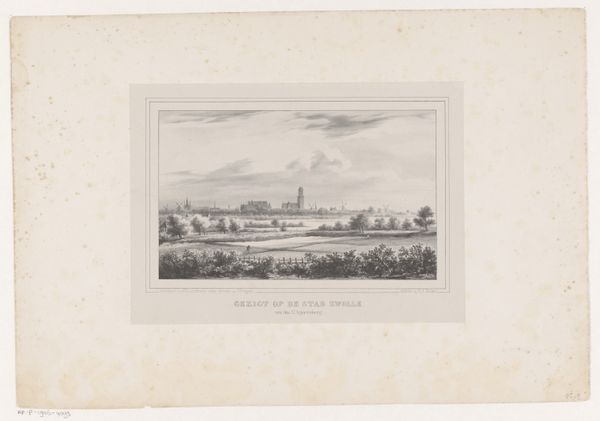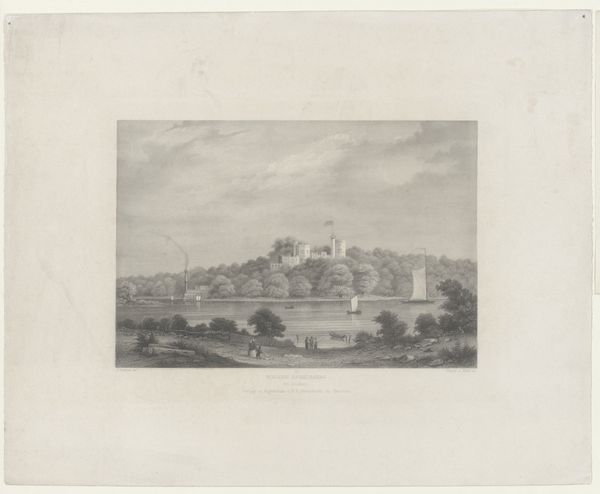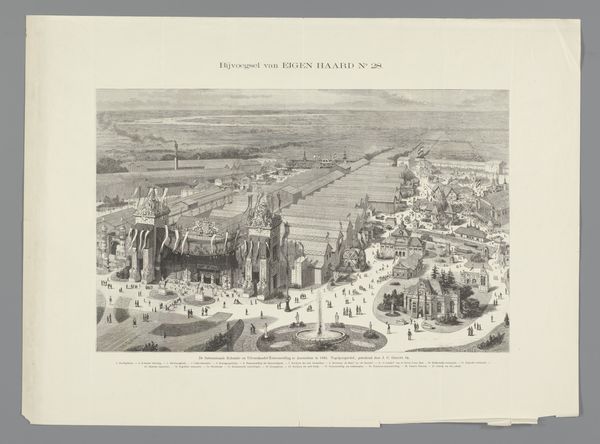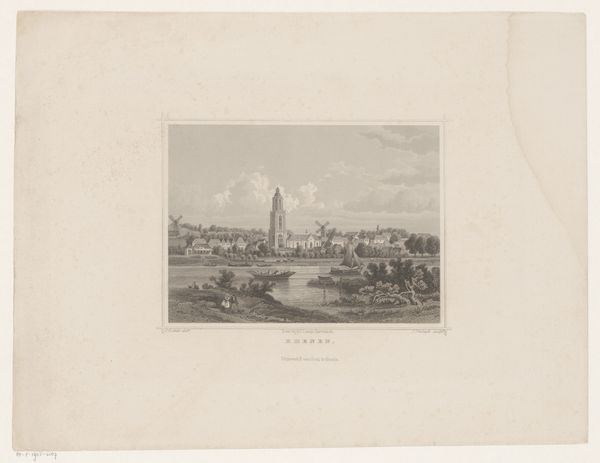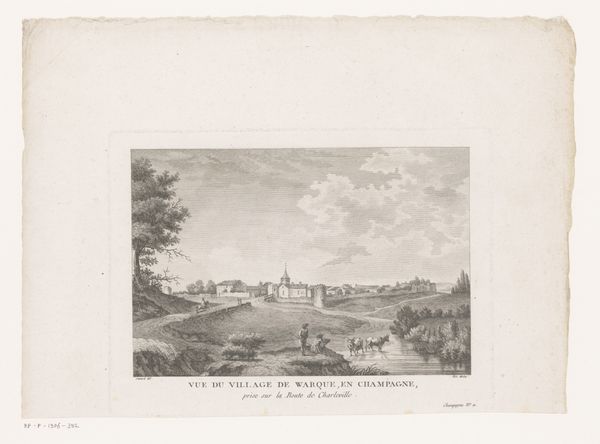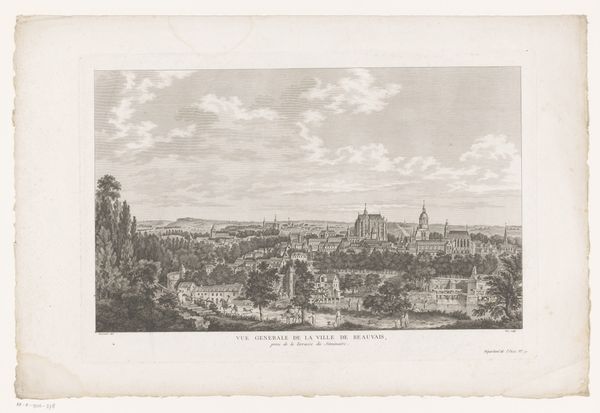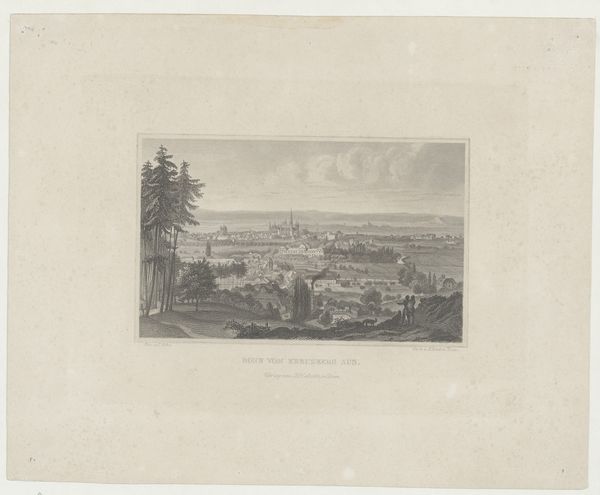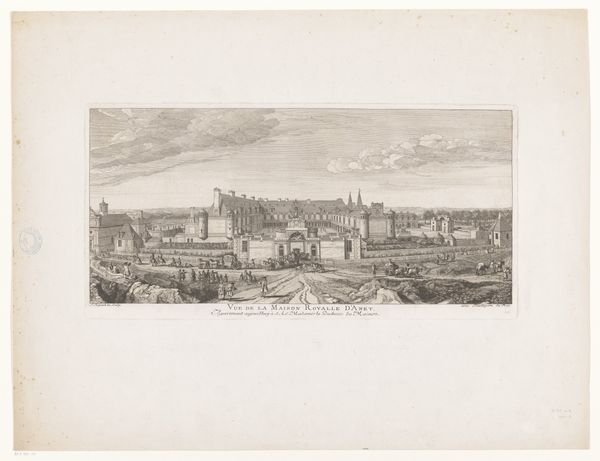
lithograph, print, architecture
#
16_19th-century
#
lithograph
# print
#
landscape
#
cityscape
#
architecture
#
realism
Dimensions: height 511 mm, width 677 mm
Copyright: Rijks Museum: Open Domain
This lithograph, by A. Provost, depicts the Palais de l'Industrie in Paris. Lithography is a printmaking process that relies on the natural antagonism between grease and water. The image would have begun with a design drawn on a smooth stone surface, usually limestone, using a greasy crayon or ink. The stone is then treated with a chemical etch, making the areas that are not protected by the grease receptive to water. In printing, the stone is dampened and then inked. The ink adheres only to the greasy image, which is then transferred to paper under pressure. Lithography was particularly well-suited to capturing architectural details and the bustling activity around the Palais. The quality of the final print depended heavily on the skill of the artist in preparing the stone and controlling the printing process. The ability to produce multiple impressions meant this image could circulate widely, informing a broad public about the industrial exposition held here, and the fruits of globalized labor on display within.
Comments
No comments
Be the first to comment and join the conversation on the ultimate creative platform.
